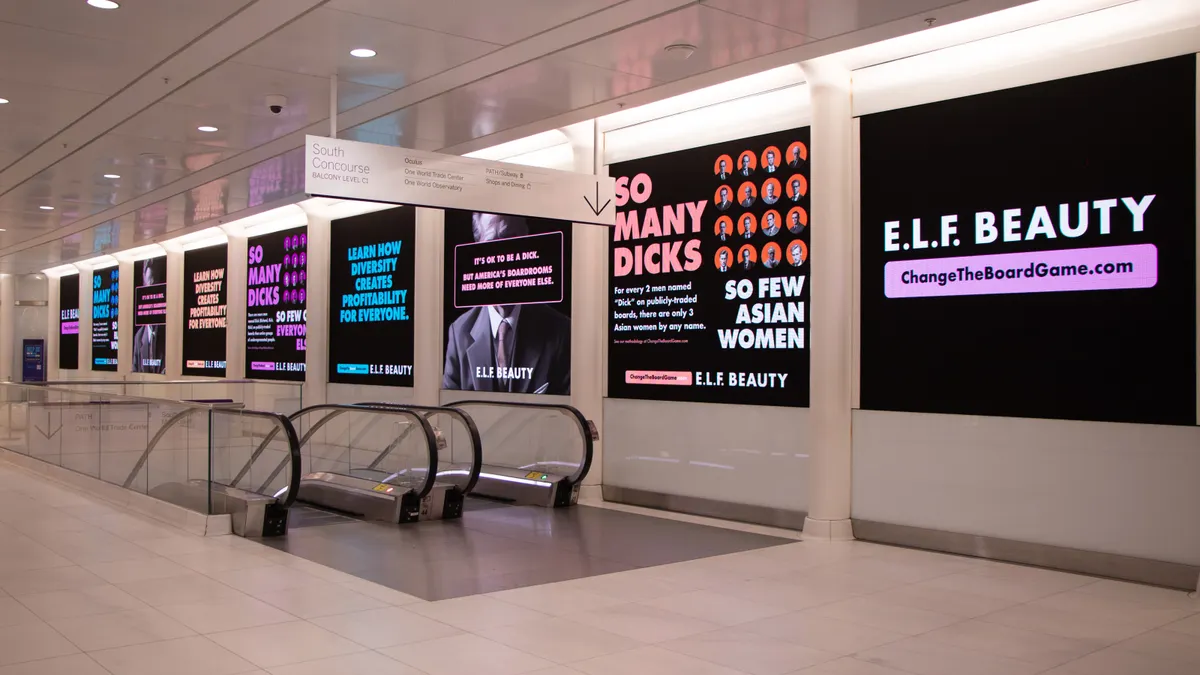The following is a guest post by Chris Tobey, vice president creative & design at GoDaddy. Opinions are the authors' own.
A few years ago, GoDaddy brought all its marketing and branding efforts in-house. As an online services platform for entrepreneurs with nearly 21 million customers, this was no small effort.
Companies choose the in-house route for various reasons, but typically, they want to gain efficiency and agility. With creatives working toward the same goal day in and day out, there's no need for the middleman. As a result, they rid themselves of client onboarding and common client-agency misunderstandings (and meetings). The brand gains speed and an ability to produce materials when a need suddenly arises.
Our reasons included another: We wanted our work to reflect the depth, interest and nuance that comes with having so many entrepreneurs and small businesses as GoDaddy customers. Our internal agency lives and breathes our customer stories, with the goal of reflecting these stories to a larger audience and inspiring other budding entrepreneurs.
For us, going in-house was a success. But like anything in business, nothing is guaranteed. When companies make their move for hard-headed business reasons, they can't expect that, somehow, the below the line creatives will spontaneously create stellar materials.
To start, hire the best people your budget allows. Find creatives capable of delivering world-class ideas and get them familiar with your brand. Make brand messaging a fluent second language.
But hiring the best doesn't mean you're leaving the accounting spreadsheets behind. Instead, you'll be working alongside professionals who can deliver an agile product consistently. Done right, it's a practical business move.
With that in mind, here are the three takeaways to consider when in-housing.
Bring your production in-house, too. It's not just the copywriters and graphic designers who should be in-house. It's easy math to compare your internal production costs with agency rate cards to justify the move. With in-house production, you can leverage your team for the big ideas and campaigns — along with the smaller opportunities that can arise quickly. And your message remains consistent throughout.
Provide support from the top. Creatives are a different breed. They're not just outside the box — they're rethinking the box itself. Support must come from the leadership, or mediocrity will likely follow. Respect your team's workloads and give them reasonable deadlines. Do your best to understand their work processes and realize they aren't magicians — they need input and practical guidance. When creatives are supported, they do their best work and everybody wins.
Build an environment where great ideas can thrive. In-house production allows for significant contact among creatives. The relationships you forge when everyone is under the same roof creates room for open dialogue among the varying disciplines. Creative teams should also hire with diversity in mind. This opens the door for multiple perspectives, ideas and less tunnel vision when it comes to brand storytelling. The video crew and the copywriters can brainstorm with the editors and managers. You can ensure everyone from creative to production to marketing has a stake in making the work successful.
I'm a supporter of in-house agencies. But don't expect your team to run on its own. Go ahead and encourage your team to know the brand's lore and traditions, but make it a safe environment for them to contribute new perspectives. You're laying down a practical framework; let the creativity flow from that.











